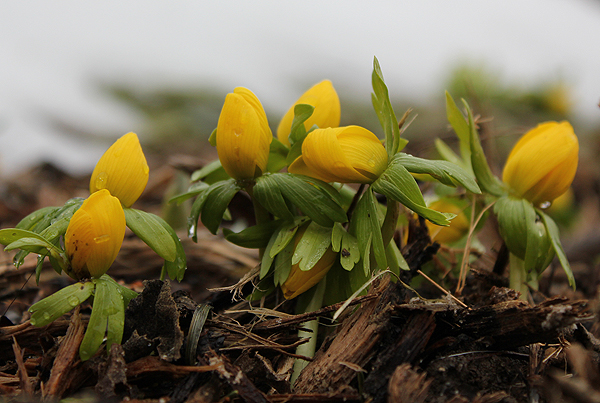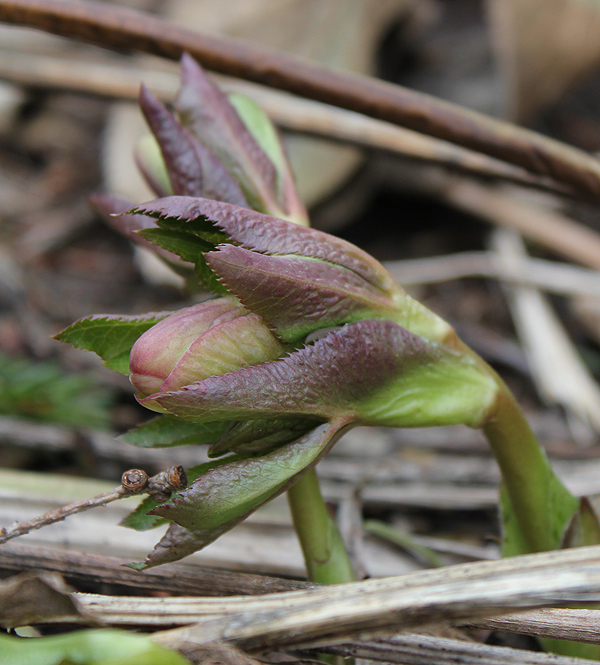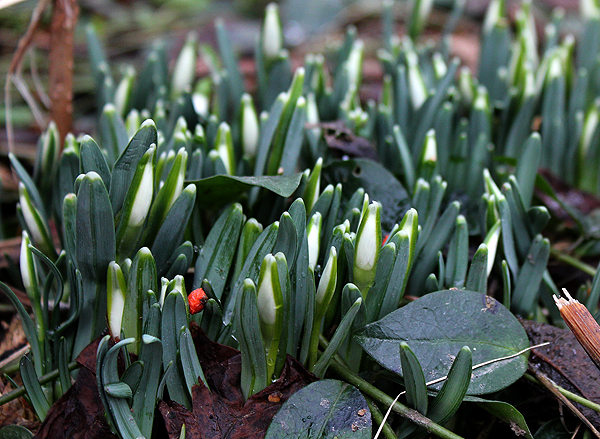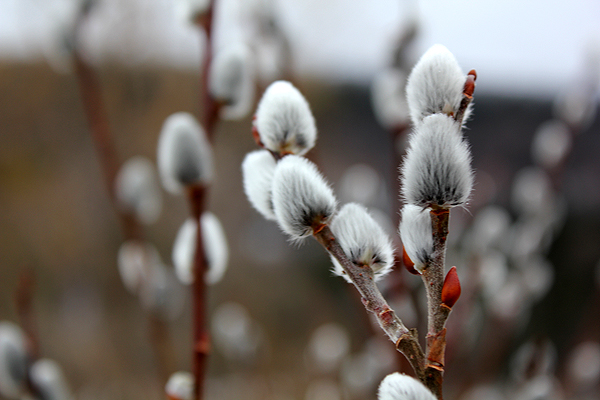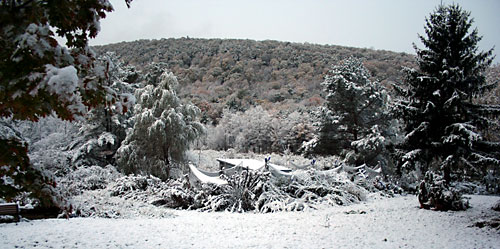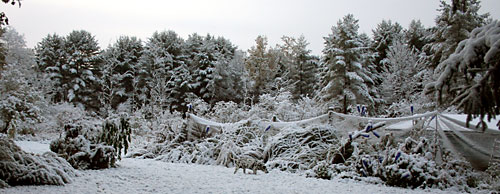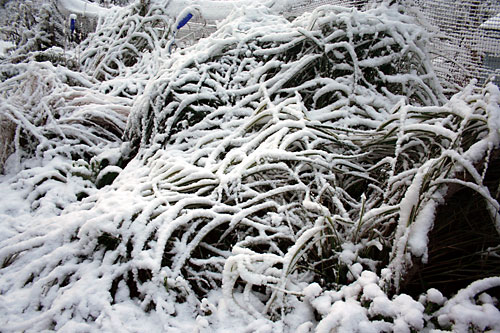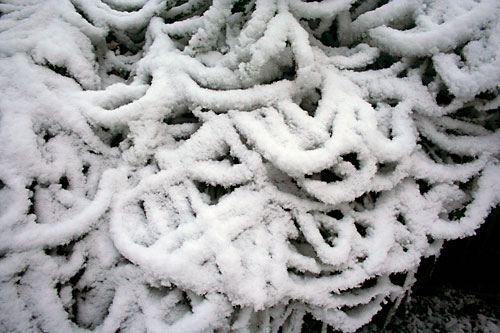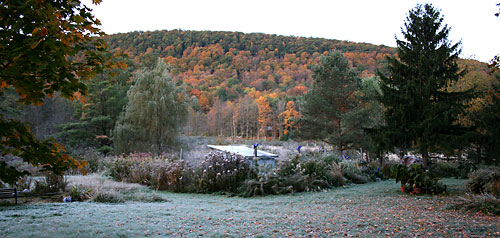Category: Phenology
What happens when. ‘Today the first snowdrop flowered.’
Snow this morning
I stumbled out the door this morning with the dogs to find an inch or so of wet snow on the ground. Then we lost power from 6 to 7:15 a.m. Fortunately it got light enough to shoot some pix before we got lights, water and heat back.
The usual scenes for the time-lapse stack…
The grasses went down in some crazy patterns. (They bounced back by the time I got home from work.)

The 12-foot Miscanthus floridulus came down to around 5 feet.
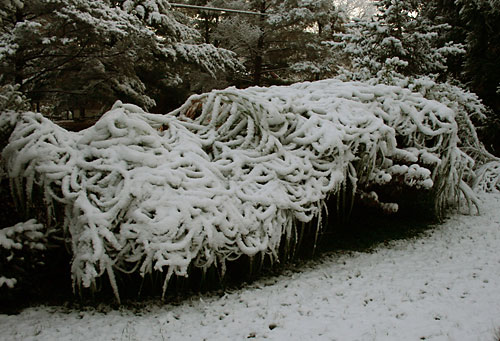
Blog Action Day: Climate change for gardeners
 Here’s my post for Blog Action Day.
Here’s my post for Blog Action Day.
Climate change hit home for me the moment I saw the graphic at right from a 2007 report by the Union of Concerned Sciences. That’s my beloved Upstate New York marching climatically down to Georgia before the end of the century.
Some folks might say, “Great, start planting palms.” But I’m not a big fan of rapid ‘Zone creep’ — particularly when you consider all the other bad things that come along with it, from a post I did back in 2007 (How will global warming affect your gardening?):
- Warmer winters may allow gardeners to grow some plants that before could only grow in milder climes. The wine grape industry, which relies on varieties that are only marginally cold-hardy in upstate New York, may benefit from warmer winters.
- On the other hand, aggressive weeds and invasive plants will also move north. Studies show those species are better equipped than crops to take advantage of the increasing carbon dioxide levels in the atmosphere that are driving warming, notes David Wolfe, climate change expert in Cornell University’s Department of Horticulture.
- Pests and diseases that were held in check by the cold may become more of a problem. Lifecycles of beneficial insects may get out of synch with the pests they help control.
- Natural ecosystems will shift north, with oak-pine forests replacing maple-beech-birch forests in some places, for example.
- Less reliable winter snow cover may hurt over-wintering of some perennial crops and flowers.
- Hotter summers may cause heat stress even in warm-season crops such as tomatoes.
It’s uncertain if weather variability will increase along with temperatures. But most models predict fewer but more concentrated precipitation events, causing longer droughts punctuated with bigger storms and flooding. Anomalous frosts early and late in the season despite generally warmer temperatures are also a concern.
For gardeners, adapting to a changing climate may be as simple finding better-adapted tomato varieties or other plants to grow. But for commercial growers, changes are likely to be more involved. “Everyone is going to have to invest some to respond to climate changes,” says Wolfe.
What can you do about it? Most important is to support public policies that will reduce carbon emissions. But there are some other things you can do in your own garden that at least model the kinds of changes we need to make on a global scale:
- Plant trees to store carbon in woody tissue.
- Keep the ground covered year-round so that plants are drawing carbon dioxide out of the atmosphere and storing it in their tissues, and ultimately the soil. (Plant cover crops!)
- Use less energy — mowers and other power tools.
- Drive less. Import less. Make use of more local resources in your garden.
Please. As much as I’d like to overwinter palms outside, I’d rather move to Georgia to do that — without taking the whole state of New York with me.
Here’s an excellent video from NPR’s Wired Science on global warming and Zone creep.
Monday’s frost
Videos: Garden Bloggers’ Design Workshop – Time in a Garden
Hat tip to Nan for hosting this monthly workshop.
I’ve been shooting a series of images this year from two spots, anticipating that sometime over the winter holidays I’d piece together a video using these directions at
eirikso.com.
So consider this a work in progress, as the best is yet to come — especially the colors on the borrowed scenery of the ridge of the west view. (View high-def versions here.)
West view, March 15 to August 15:
Ellis Hollow – Season in 60 seconds (west view) from Craig Cramer on Vimeo.
East view, March 15 to August 15 (Ignore the typo in the title. This one is ~60 seconds too.):
Ellis Hollow – Season in 60 seconds (east view) from Craig Cramer on Vimeo.

